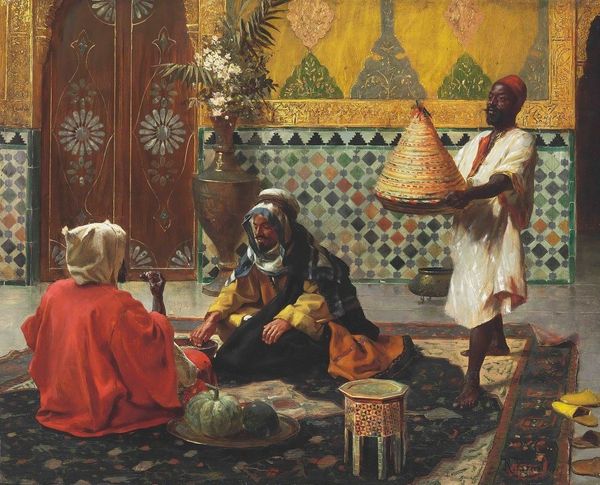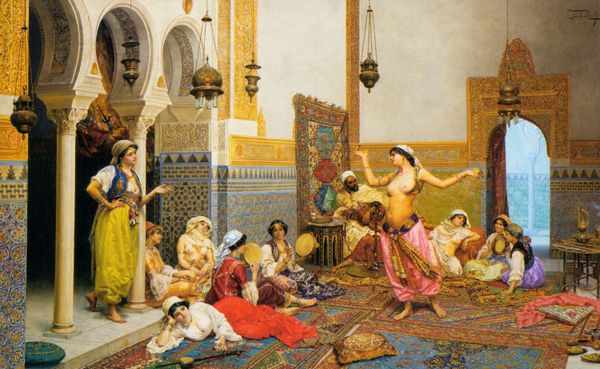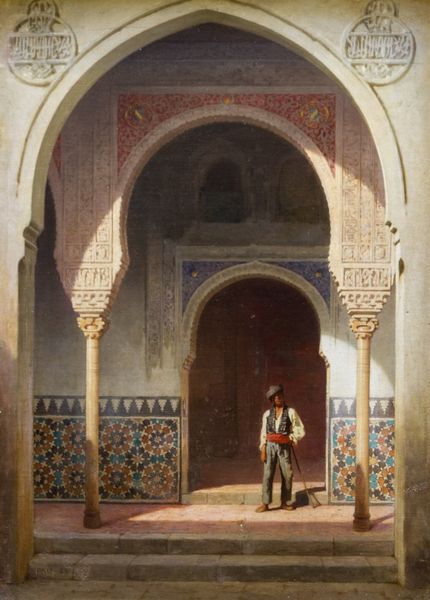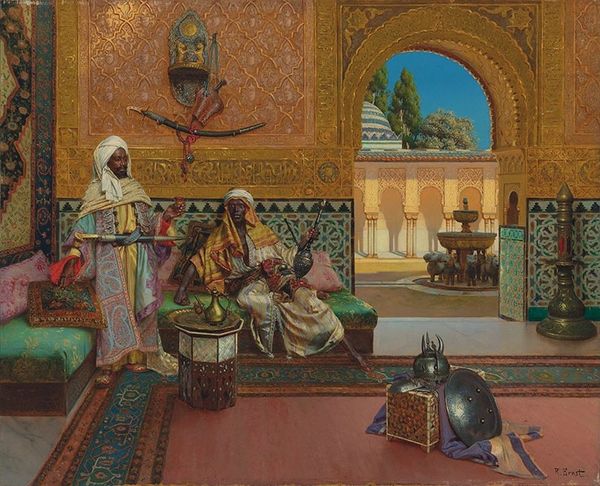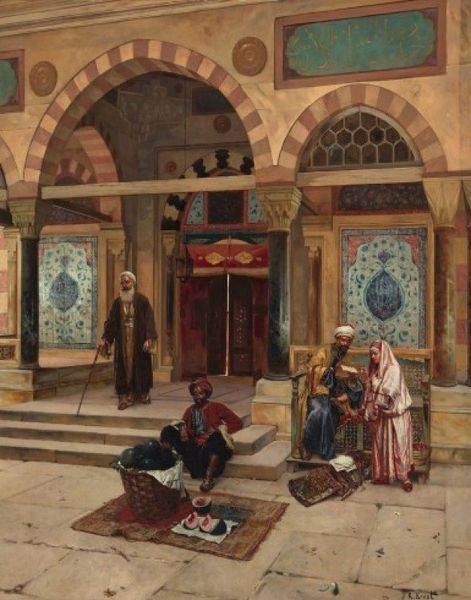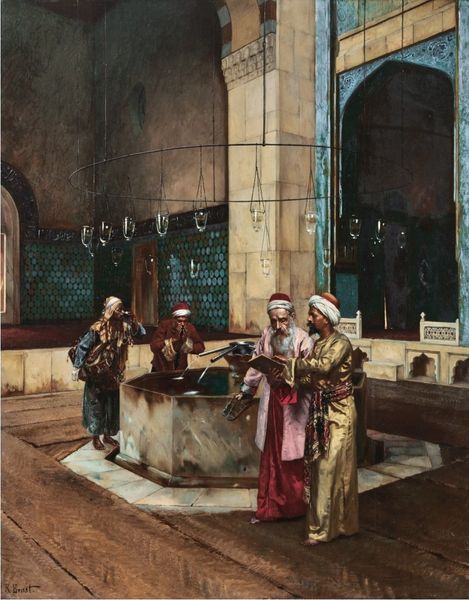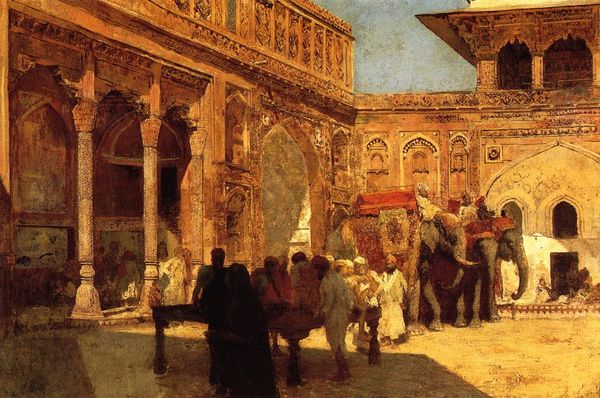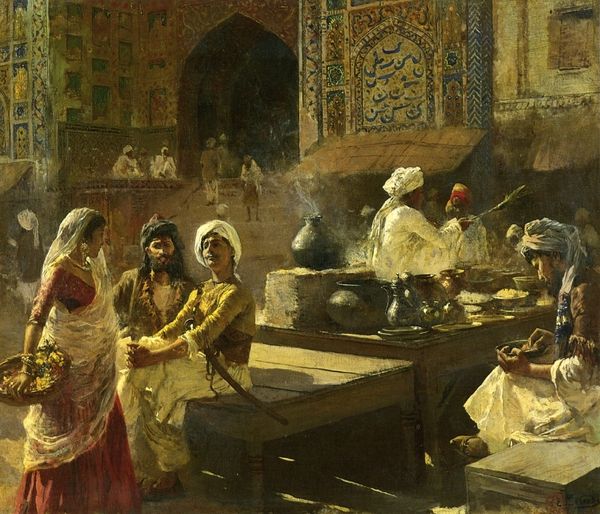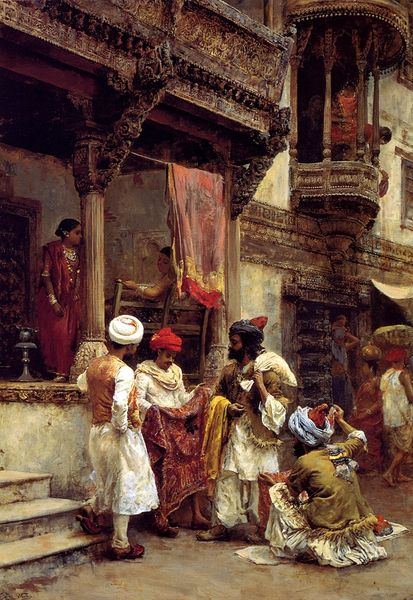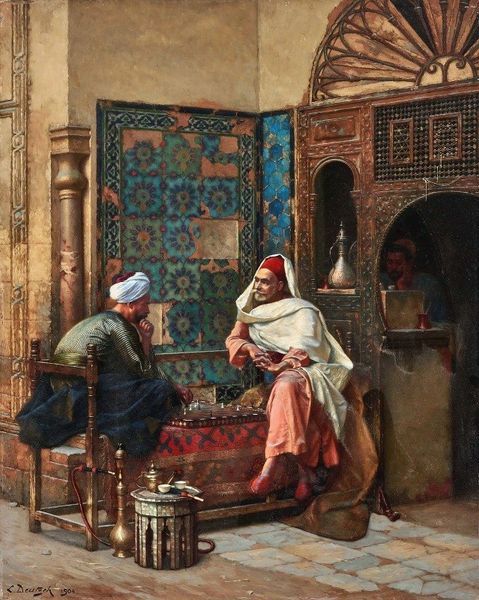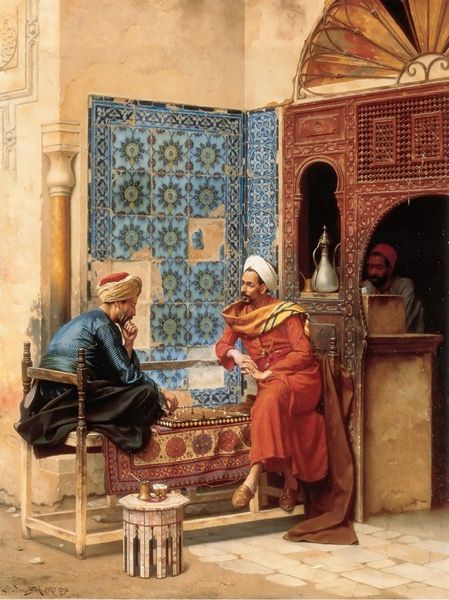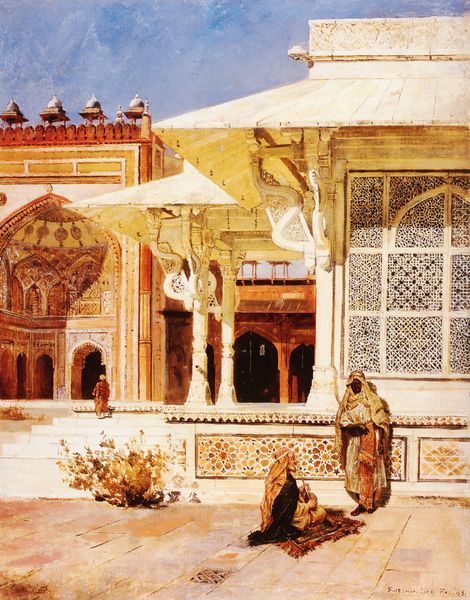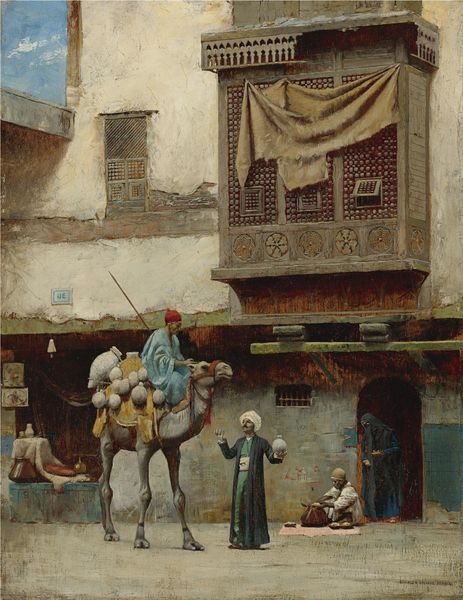
painting, oil-paint
#
gouache
#
painting
#
oil-paint
#
figuration
#
oil painting
#
orientalism
#
genre-painting
#
history-painting
#
watercolor
Copyright: Public domain
Editor: This painting, titled "Le harem du palais" by Gustave Boulanger, rendered in oil paint, plunges us into what seems to be an opulent courtyard scene. There’s a sense of stillness, almost theatrical. What layers are you seeing beyond the initial impression? Curator: What I immediately perceive is a visual representation of orientalism, a Western fantasy of the East, particularly the Middle East and North Africa. Consider the term "harem"—it is loaded with assumptions about gender, sexuality, and power dynamics within these cultures. How do you see this painting fitting into the broader history of orientalist art? Editor: I see how it's contributing to a constructed image. But what I don’t understand is what purpose this representation fulfills. Curator: That’s a crucial question. Such portrayals often served to reinforce Western ideas of superiority and control. It's a representation devoid of the voices and lived experiences of the people who belonged to the cultures portrayed. Do you notice any elements in the painting’s composition that might support that interpretation? Editor: Perhaps the passivity of the figures? They're presented for our consumption, aren’t they? Curator: Precisely. Their supposed idleness becomes a marker of cultural "inferiority," justifying colonial domination. What seems exotic is just reinforcing established power structures. Do you think analyzing this painting can shift from being a pretty scene into a historical analysis of prejudice? Editor: Yes, I do. Before I saw just an old painting, but now, through the historical and social context, the real value of this artwork can emerge. Curator: And that value isn’t just aesthetic, it is critical! We can now think about how such stereotypes continue to echo in contemporary representations.
Comments
No comments
Be the first to comment and join the conversation on the ultimate creative platform.
